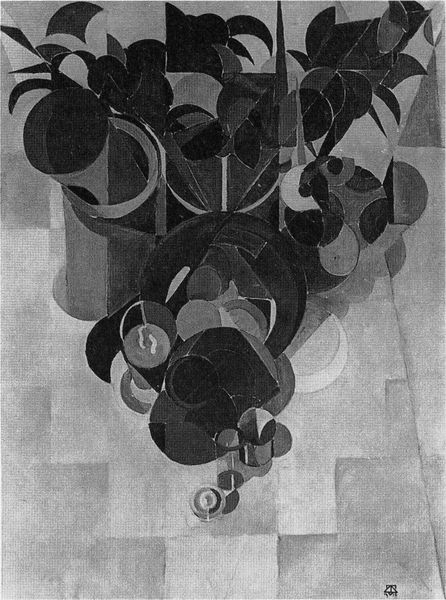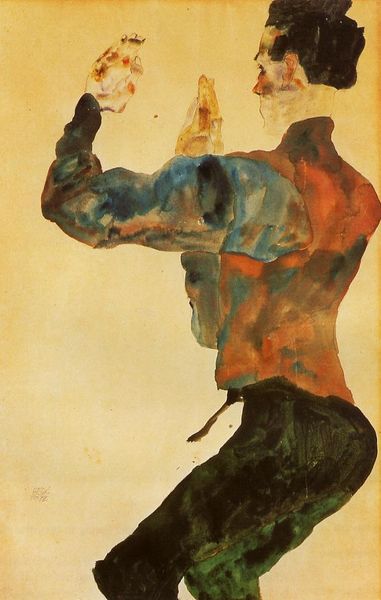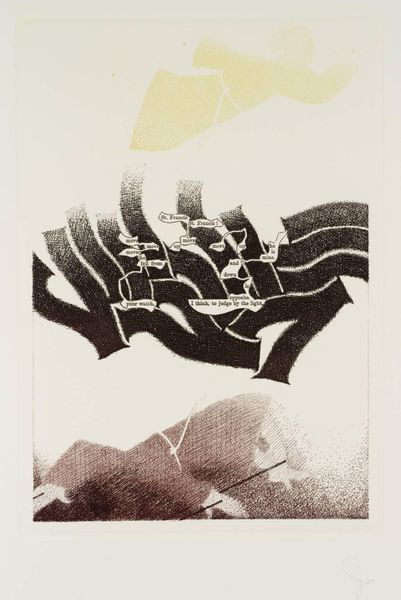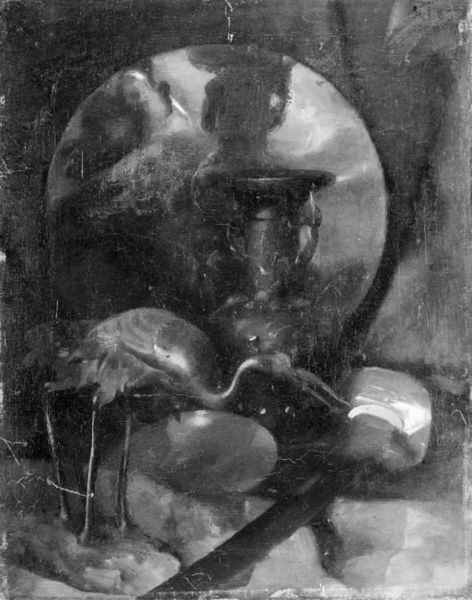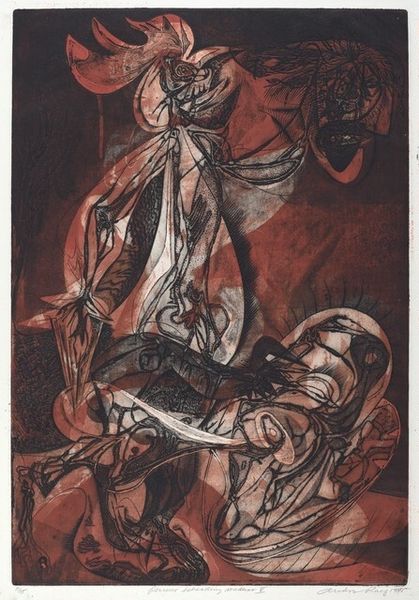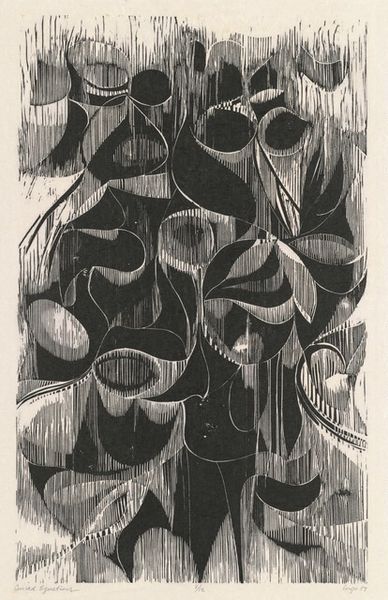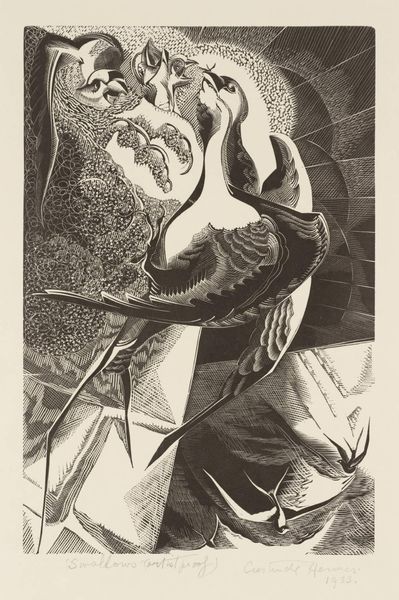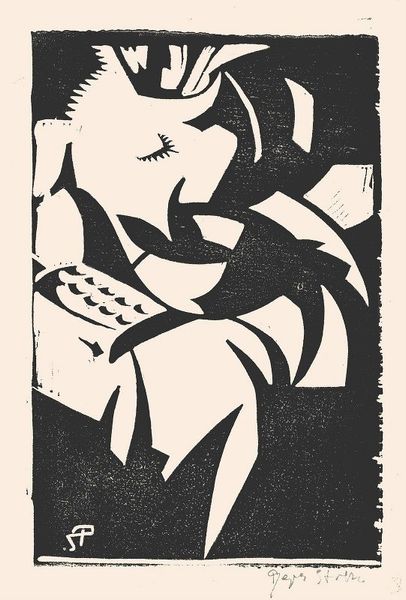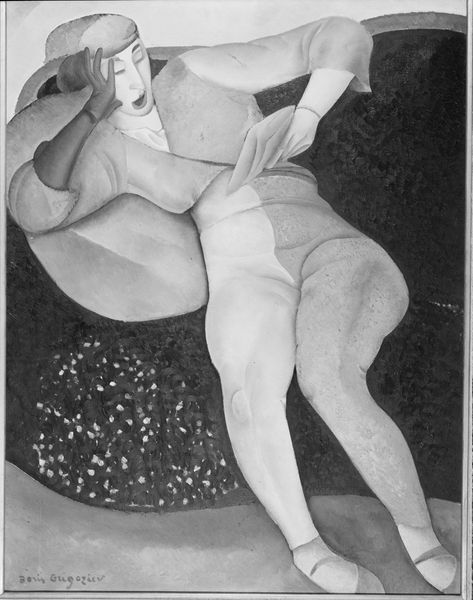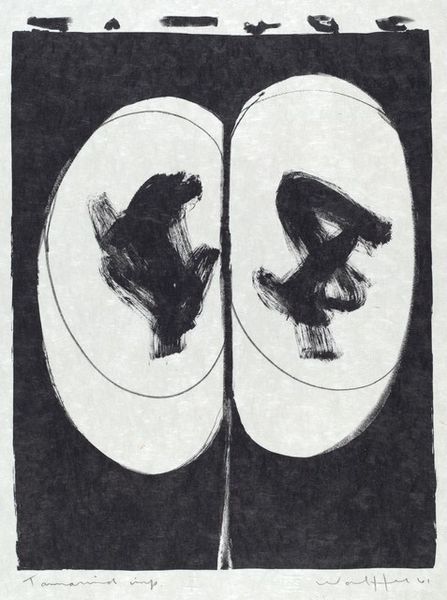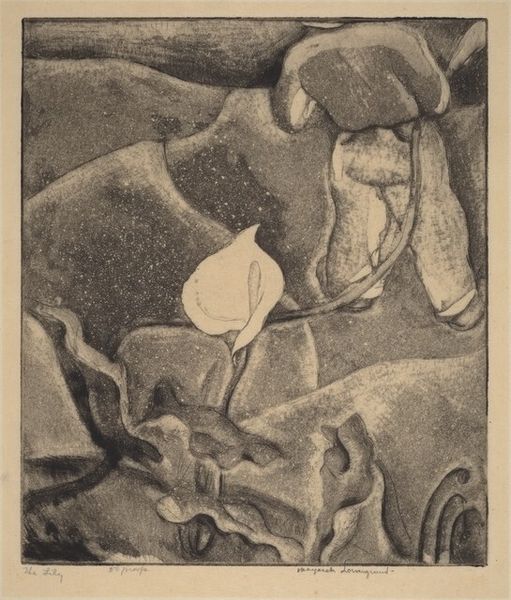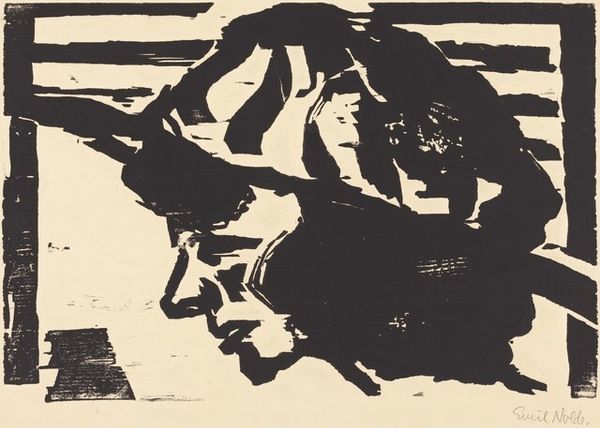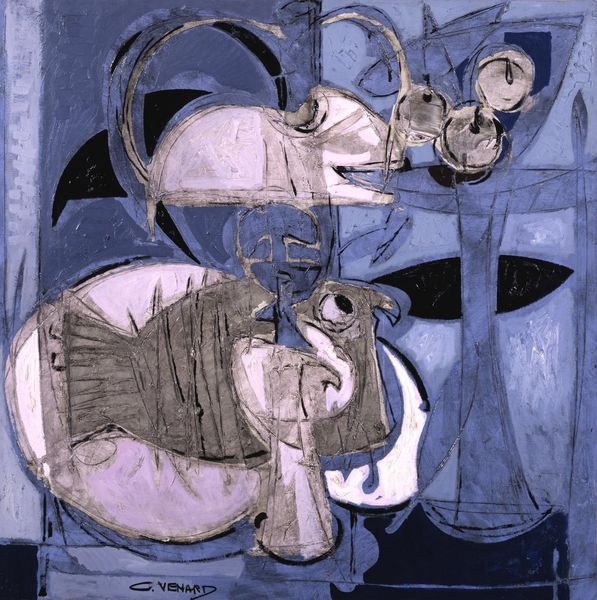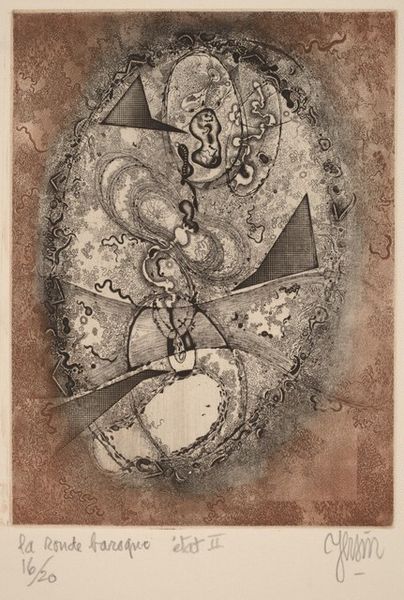
Copyright: Public domain US
Curator: This is Giacomo Balla’s “Primavera,” or “Spring,” created around 1918. Editor: It feels like an explosion, doesn’t it? Or maybe a strange kind of growth, pushing outwards. I am immediately taken by the swirling shapes and how grounded the picture is through its restricted monochrome. Curator: Absolutely. Considering the historical moment, at the close of World War One, this work serves to display Italian Futurism’s complex relationship with modernity through an ode to nature. How might we interpret it concerning wartime devastation and cultural renewal? Editor: Well, it certainly reflects a desire for rebirth. The organic shapes imply flora blooming from a sort of primordial soup, yet these are rendered with hard geometric lines—a reconciliation, perhaps, of the natural world and industrial advancements that powered the conflict. I also read this in relation to shifting gender roles and class struggles prominent during this era and the subsequent call to construct a new societal landscape with radical reform. Curator: Exactly. Balla was interested in depicting speed and dynamism. Consider how his futurist predecessors embraced industrial materials, seeking to elevate the status of new manufacturing processes while critiquing the perceived stagnation of academic painting. Balla instead presents a futurist view using abstracted forms of nature, such as petals and growth cycles, in an artistic creation produced by hand in an era marked by mass factory production. Editor: It strikes me that the labor involved in producing such abstract natural imagery resists total industrialization and offers nuanced agency. It poses an important question about who gets to produce art, as it provides agency during moments where traditional art venues had been destabilized. I find Balla's perspective refreshing amidst Futurism’s more bellicose factions, signaling to other Futurists an openness to themes outside destruction. Curator: Precisely. It reveals a fascinating dialectic—Futurism wrestling with its own tenets while reevaluating labor and tradition at a pivotal historical moment. Editor: I think unpacking this image demonstrates that the story of early modernism is often narrated with attention to labor practice, material resources, and technological advance as an art of hope during eras of violent and material crisis. Curator: Absolutely; in closing, considering Futurism’s turbulent relationship to nature alongside the global political climate emphasizes the continued importance of cultural material today.
Comments
No comments
Be the first to comment and join the conversation on the ultimate creative platform.
